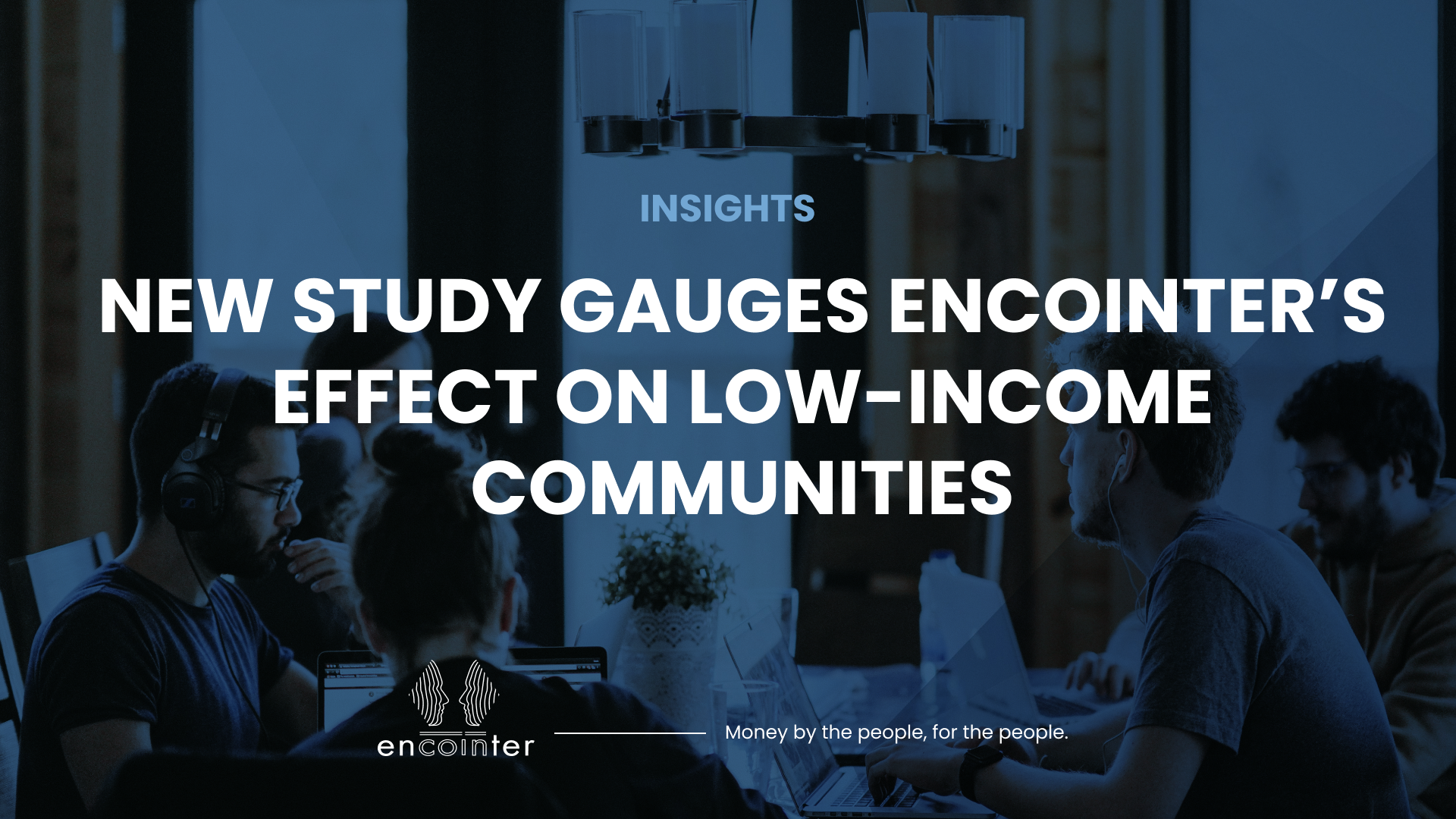As discussed above, Ms. Welti’s study provides a highly simplified agent-based model to approximate the main factors at play in an Encointer currency community. While further research in real-world settings is required to further validate these findings, the initial results are highly encouraging. The study suggests that Encointer community currencies could play a role in stimulating local economies, boosting purchasing power, and reducing inequality. In addition, it provides some valuable practical insights about the options available to new Encointer communities on how to tailor their currency to local needs.
New Study Gauges Encointer’s Effect on Low-Income Communities

The Encointer protocol involves a number of interesting and sometimes countervailing design characteristics. But how might it play out in practice in a community of rational individuals in a low-income community? A new study by ETH scholar Damla Welti explores Encointer’s effects on purchasing power and inequality in such a scenario and provides some practical insights for the founders of new Encointer communities.
At its heart, Encointer is based on a relatively simple idea. Participants in an Encointer local community currency meet at regular intervals to prove their personhood and receive a community income. To discourage hoarding and encourage consumption, the concept of demurrage is applied, which means that the value of holdings in Encointer wallets decreases over time. The idea is that this injection of additional liquidity into the community will increase the purchasing power of participants, thereby stimulating the local economy and reducing poverty.
But to understand how this might play out in practice, a number of questions need to be explored. Will Encointer really increase the purchasing power of citizens in low-income communities in the long run? How do its various features such as minting and demurrage interact with each other? What effects will it have on the levels of inequality among participants? How can communities adjust the parameters of their currency to reflect local needs? These questions were the subject of a recent thesis by Damla Welti, a postgraduate scholar in Electrical Engineering and Information Technology at ETH Zurich.
Approach and Results
Ms. Welti used agent-based modeling for her study, a computational approach that seeks to simulate the actions of autonomous individuals to understand the dynamics of a wider system. As with all modeling of this type, some assumptions needed to be made for the sake of simplicity and operationalization.
The study aims to simulate the behavior of a fictitious community comprising 50 people in Ouagadougou, Burkina Faso. Five members of the community initially decide to launch an Encointer currency called OGU. The model assumes that the probability that a person will attend a key-signing meetup will be inversely proportional to their wealth: i.e. those who have fewer assets will be more likely to attend. It also assumes that each person sells one product and purchases up to five products each day. To prevent hoarding and encourage consumption, the community members implement demurrage: if OGU is held unused in an Encointer wallet, it will halve in value in 12 months.
The study considered two usage scenarios. In the first scenario, OGU and a small amount of fiat are used in parallel. In the second, participants have little or no access to fiat — not an unrealistic prospect given that an estimated one billion people globally cannot open a bank account due to a lack of a state-issued ID.
Overall, the simulation yielded highly encouraging results. In both scenarios, the introduction of OGU increased the purchasing power and economic activity among participants, producing a stable micro economy over time.
Effect on Fiat Savings and Inequality
In the scenario where both currencies were used in tandem, the purchasing power of residents quadrupled, while allowing people to save more of their fiat income. The presence of demurrage encouraged participants to make most of their purchases using OGU rather than fiat. As a result, participants could save a much higher proportion of their fiat income. Although the fiat money was distributed unevenly, the addition of regular OGI payments pushed the community closer towards equality in terms of purchasing power.
Stabilization of Token Supply
In addition to the high-level conclusions, the study also sheds light on the connection between community size, demurrage, and token supply. As the community grows, the supply of tokens expands initially. Eventually, however, all motivated participants join the community currency, membership growth tails off, and demurrage payments exceed total token supply. This causes the supply of tokens to stabilize once the community reaches maturity. In the case of the OGU community, this began to take place after 1095 days, with the total supply eventually stabilizing at about 36,500 tokens.
Adjusting parameters for communities with economically inactive participants
Not everyone in a community is an entrepreneur and some residents may suffer from low levels of education and training or a lack of physical resources like land or raw materials. For this reason, the study also considered a case where 50% of community members did not have products or services to sell and acted solely in the role of a consumer. In this scenario, the introduction of OGU results in greater economic activity and enables the poorest members of the community to make some purchases. However, inequality as measured by the Gini index is comparatively high in this example.
The study suggests a number of Encointer parameters that can be adjusted to produce improved developmental outcomes in such a scenario. In particular, it found that if the basic income that participants receive at each key-signing ceremony is increased, the rate of depreciation through demurrage is slowed down, and the interval between each key-signing event is shorter, inequality will decrease.
Conclusion

